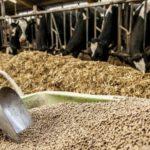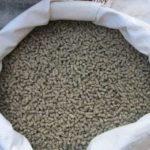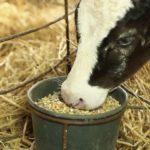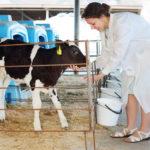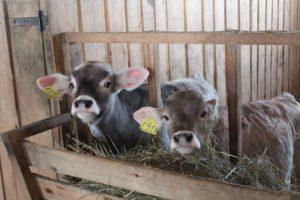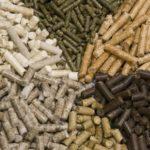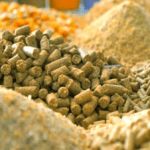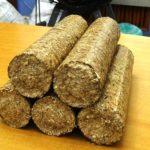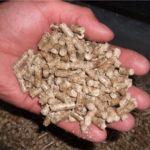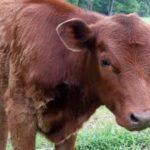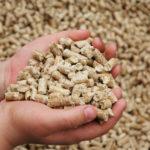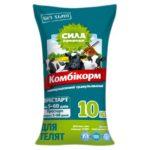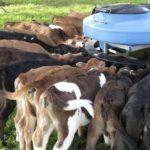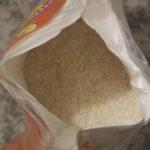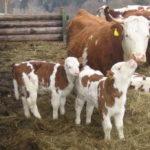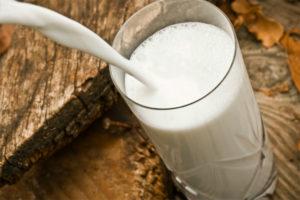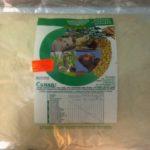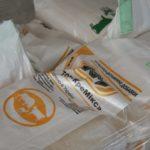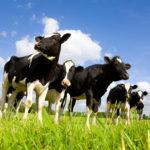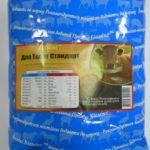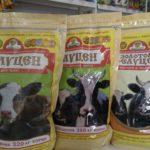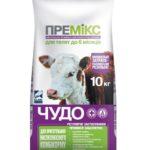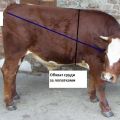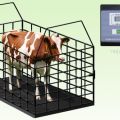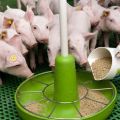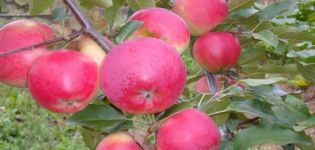Types and composition of granulated feed for calves, when to give
Organization of nutrition using compound feed is an important part in cattle breeding. When raising young animals with the help of individually selected feed mixtures, the weight gain of the animals can be increased. Vitamins and minerals in feed additives help to strengthen the immunity of animals. There are various types of compound feed for calves: granulated, briquetted, loose. Each has advantages and disadvantages.
What is compound feed and what is its composition
Compound feed is a universal balanced mixture of plant, grain and animal components. Combined feeds are selected according to the age and orientation of cattle - dairy, meat and mixed. Special mixtures are produced for dairy cows and bull-calves. The content of minerals and vitamins in them is selected taking into account age needs
The task of the starter, or compound feed for calves, is to increase weight, strengthen the immunity of animals. Therefore, it contains proteins. Fiber helps to absorb nutrients and normalizes bowel function. The product is enriched with minerals necessary for growth: magnesium, potassium, zinc, copper. The starter feed contains the following vitamins and minerals:
- sulfur;
- manganese;
- cobalt;
- carotene;
- iodine;
- calcium;
- phosphorus;
- starch;
- retinol;
- calciferol;
- tocopherol.
The approximate composition of feed for calves less than six months old and the proportion of components in the mixture are shown in the table:
| Component | Content in percentage |
| Wheat | 27 |
| Wheat bran | 24 |
| Corn | 34 |
| Barley | 30-37 |
| Oats | 15 |
| Salt | 1 |
| Soybean meal | 17 |
| Ethyl yeast (eprin) | 6 |
| Treacle (molasses) | 4 |
| Herbal flour | 4 |
| Feed fat | 3 |
| Calcium phosphate | 2 |
| Feed yeast | 7 |
| a piece of chalk | 1 |
| Premix | 1 |
| Sunflower meal | 25 |
The set of components and nutritional value may vary depending on the manufacturer. The index of metabolic energy obtained from the feed varies from 9.8 to 12.2 megajoules.
Varieties
Starting mixtures are distinguished by the form of release and purpose. Different types of starters have advantages and disadvantages.
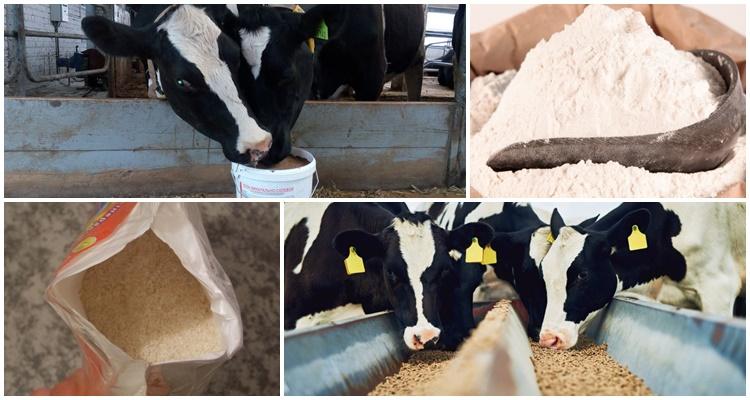
By release form
Compound feed is produced in granules, briquettes and in loose form. The types differ in price and ease of use. Calves are more sensitive to feed than adult animals. Therefore, it is important to choose a feed mixture that is harmless to the digestion of animals.
Loose
The components are ground into a homogeneous cereal. Loose starter is distinguished by grind: fine, medium and coarse.
Particles of the same components are thrown into groups.The mass is not uniform when fed. There are more substances than others, which is why calves eat unbalanced food. They can also eat away the component that tastes better, and refuse the rest. The loose starter must be stirred before pouring into the feeders. It is suitable for feeding calves in private houses. But the room in which the animals are kept must be ventilated or hoods installed so that small particles of feed do not float in the air with dust.
Granulated feed
The components are pressed into hard cylindrical lumps. Their diameter is designed for animals of different ages - 5-19 millimeters. The granular starter is suitable for automatic feeding systems on farms and for manual feeding on small farms.
During the production process, the components are subjected to heat treatment, so bacterial contamination through granulated feed is excluded. A high-quality granular starter has a high price and cannot be cheaper than loose compound feed.
Despite the disadvantages, the pellet feed helps calves to grow and is the most convenient to use.
Briquetted
The raw material is pressed into rectangular briquettes. In this form, roughage - straw and hay - is better preserved. To hold the ingredients together, molasses is added to the mixture.
American and Canadian producers use cane molasses, while domestic producers use processed sugar beet. Molasses accelerates metabolism. Therefore, calves on briquetted feed gain weight faster.
Compound feed in briquettes is widely used at large meat and dairy farms.
Compound feed by appointment
Starters replace a complete diet for calves. Farmers also use top dressing and food additives. The purpose of the feed is determined by marking - capital letters on the package.
Full-size (PC)
The product includes all types of feed necessary for healthy development, does not require additional vitamin supplements. The composition of the product includes cereals - oats, barley, wheat. A complete feed includes a pre-starter ration for calves from one to three months.
Depending on the age group of young animals, rations are produced with different percentages of components.
In order for maturing calves to receive the necessary nutrients in each phase of development, it is necessary to change the complete feed in accordance with the age group. Thanks to this nutritional scheme, the productivity of the animals is increased.
Complete feeds are introduced into the menu of animals gradually.
Concentrated (K)
Concentrates contain more protein, fiber and minerals. They are added to the main, self-selected diet. According to the composition, two types of concentrated feed are distinguished:
- carbohydrate - corn, millet, wheat and barley increase the carbohydrate content of the product up to 75 percent;
- Protein - 25 percent protein from legumes.
Concentrated compound feed is given in winter with silage, hay, vegetables and grain, but its share should be less than half of the daily ration.
Feed mixtures
Contains protein or carbohydrate concentrates and herbal flour. To combine the ingredients, add molasses or urea, from which the calves get nitrogen.
In the intestines of small calves, the microflora is not sufficiently developed, so it is difficult for them to digest ammonia.
Additives (BVD)
The feed admixture contains a complex of vitamins, proteins and mineral salts that ensure the normal growth and development of calves. With the help of BVD, self-prepared feed mixture is enriched. The norm of the supplement in the daily diet is 25 percent.
The use of a protein supplement allows you to feed animals with cereals with a low protein content.
Premixes (P)
Premix is a type of food additive that consists of wheat, wheat bran, soybean meal and rapeseed cake. The admissible proportion of premixes in the diet of young animals is 1 percent.
When storing premixes, the instructions must be followed and the humidity in the store must not be increased.
At what age can you give
Farmers recommend starting formula feeding of calves from the first week after birth. Pre-starter feed can be given from the third day. For three months, the young must feed on breast milk. But calves intended for fattening need to be given a ready-made feed mixture from an early age.
There are two types of start:
- for small calves up to one month old;
- for feeding animals from the first to the third month.
Youngsters at 2.5 months, weighing 70 kilograms, are gradually taken away from milk. By three months, the animals are given 1.5 kilograms of concentrate per day.
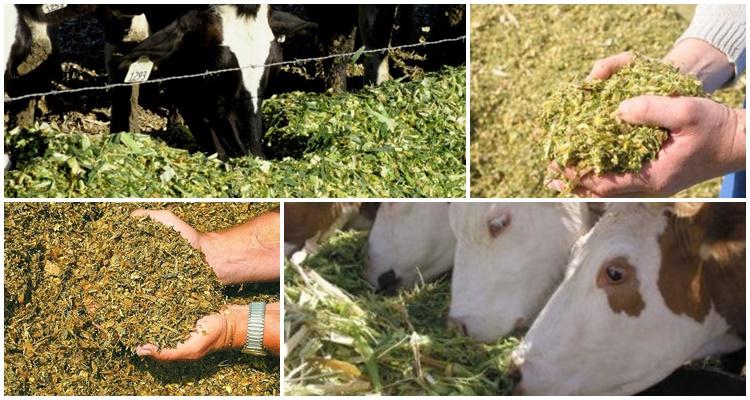
How to train a calf to feed
Starter compound feed develops and expands the stomach of calves. Cows and bulls fed the feed from an early age eat more food and gain weight better.
How to feed calves:
- compound feed is diluted with water to a mushy mass;
- give a handful a day;
- not eaten food is removed, the next morning a new portion is poured;
- offer to eat from the palm of your hand.
Calves need to have a drinking bowl and change the water every day. Drinking plenty of fluids promotes rumen development and assimilation of dry food. To prevent food from getting into the water, dishes with water are placed in the opposite part of the stall. On the seventh day, the calves are offered hay, on the twenty-first day - chalk and salt. The menu also includes carrots, beets and apples. The vegetables are crushed and a vitamin premix is added. On the thirty-second day, you can give the bran.
For the beginning of complementary feeding, boiled potatoes, whole and skim milk, as well as complete compound feed for the corresponding age group are suitable.
Young bulls are given as much food as they can eat without harm to digestion. Gradually, the amount eaten increases. In the fourth month, you can enter a complete starting compound feed into the diet. When the amount of the eaten mixture reaches one and a half kilograms per day, grain concentrates or adult feed are added to it.




